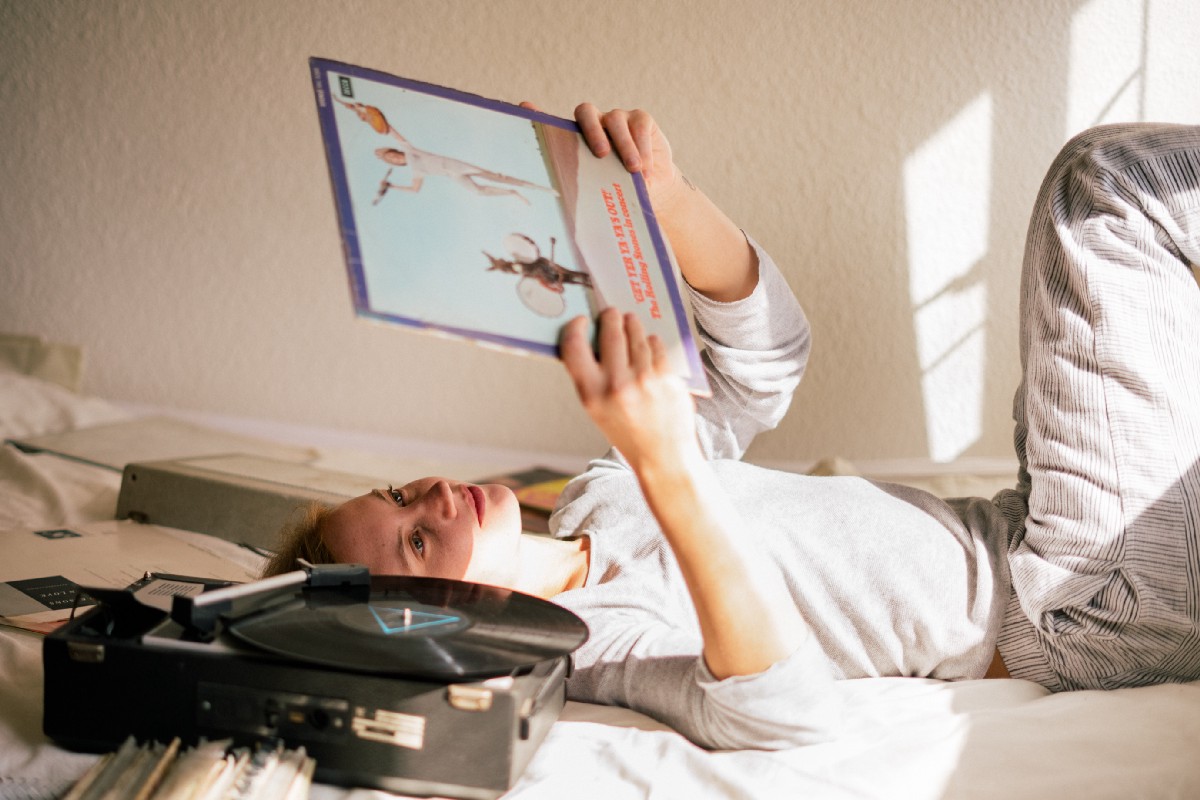
The best-loved albums of all time only seem to stand out in our memories (and the shelves) when they are wrapped in bright and beautiful album art.
Think Fleetwood Mac’s Rumors, depicting Mick Fleetwood and Stevie Nicks in black-and-white chiffon, en-pointe and tight-trousered underneath a swirling album title. Or how about Gorillaz’s 2005 offering, Demon Days, with heavily-stylised portraits of their cartoon alter-egos in a quadriptych staring moodily off-cover.
David Bowie appears with his iconic red coiffure and red and blue lightning bolt on the front of Aladdin Sane, The Beatles are sugar-coated, flower-laden and surrounded by cult-figures on the front of St Pepper’s Lonely Hearts and the prismatic triangle of Pink Floyd’s Dark Side Of The Moon are all images that spring to mind when we pose the question: what makes a good album cover?
In the new and ever-expanding age of streaming and digital downloads, it wouldn’t be frowned upon to say that it may feel pointless for musicians to invest so much time into the aesthetics of their products. But that would go against the age-old link between visuals and audio.
When we look at how we consume music in the present, whether it be on smartphones, YouTube or streaming services like Spotify, each platform still highlights the space for aesthetics. Even the resurgence of vinyl has strengthened this link between the importance of art and the music it is encompassing.
Seeing visuals stretched across twelve inches of a cover, as opposed to the four inches of a CD case, draws the eye. From there, the listener can begin to form their own opinions over how they’d expect the artist to sound or how it will represent their lyrical-content and mood – as humans have similarly done with book covers for hundreds of years.
The relationship between a musician and artist working on creating pieces for a particular album can be a close, collaborative one.
Both want to produce something that usually reflects a lyrical “story” that an album often tells, or poses a nod to the musician themselves through a depiction of something personal. Alternatively, it could be a purely aesthetic process, with the both parties aiming to create something that looks good and will actively stand out on the shelf or in the charts.
It can be a laborious and long task, especially when an artist has to translate something transient into a very visible, physical product.

Natalie McCool is a BBC Radio 1 Award-Winning artist, musician and singer-songwriter. The artwork for her newest album, ‘The Great Unknown’ came from working closely with a commissioned artist and photographer and openly discussing key themes from her music that would shine through visually.
“I think both visual artist and music artist need to start the conversation about the songs, about the atmosphere of the record, the record title and what it all means to the musician.
“During this conversation and trade of ideas, I found a central theme, image or metaphor starting to crystallise – but it needs to be original, attractive and give an audience a clear idea of what kind of music or emotion the music artist is creating.”
McCool decided she wanted her album to utilise photography as opposed to illustration, which is just one of a number of creative choices that musicians can choose between when creating a visual representation of their album. Typography, colour, shade and even physical touches such as paper or glossing are also options available – one of the many perks of the return of vinyl and rising popularity of physical music.
“For ‘The Great Unknown’ the keywords I gave the artist and photographer were: Light, Shadow, Contrast and Space,” she continues.
“I built a mood board based on that theme on Pinterest and sent it over. Ben, the artist, came up with the idea of using white building blocks over a white infinity curve to create different levels, different shadows, creating space and depth in the image.
“I loved the photo of the set-up he sent me in his studio – so we went in and did the shoot. I love the colour purple and always try to weave it into my images. Knowing this, also tinted the cover art in post-production. There’s so much in terms of personal details that goes into a finished piece.”
